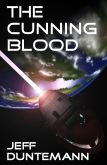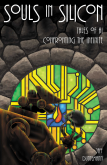
…not to mention the energy bandits. I didn’t always have trouble with those.
So. I have not abandoned Contra, am not dead nor even injured. (I took some skin off one of my toes in Hawaii.) I don’t know that I can manage a detailed entry today, but I’m not sure I’ve ever gone a month without posting here. I’ve done a little better on Facebook, but that has mostly been posting interesting links and maybe a little commentary.
Like, f’rinstance, the Sun has gone to sleep, and has been asleep now for twelve days. For ten of those twelve days, even the solar plages went missing, and I generally don’t see that. Yesterday I started to see some plages again, so I’m guessing we’ll see some spots in the next few days. It’s remarkable for this to happen just two years after a solar maximum, poor limp excuse for a maximum that it was. We’re certainly seeing a much quieter Sun than we’re used to. What that means is impossible to know right now. I doubt we’re sliding into a new Ice Age, though it’s fascinating to speculate…and one of the reasons we may not be is that we have a little more CO2 in the atmo to keep things warm.
The cool part (as it were) is that I will probably live long enough to see if a weaker solar cycle has any measurable effect on climate. (I won’t be 90 until 2042, and I certainly intend to live at least that long.)
So. The reason I’ve been so strapped is this: When we packed the house last December so we could winter over in our new house in Phoenix, we packed what we needed, and left everything else in Colorado. Now we have to empty the house except for some furniture and knicknacks for staging.
What was startling was how much was left after we extracted what we needed.
There’s a lesson in that somewhere, and if I had time I’d dig for it. Instead, Carol and I are doing triage on an enormous amount of stuff, packing and labeling the keepers and hauling the discards to whoever will take them. I’m making a salvage run to the metal yard later this week with a couple of ’50s chrome kitchen chairs with the padded panels removed, a couple of ’70s folding chairs ditto, a ’50s charcoal grill, a ’50s stepstool, some odd steel scrap, and about ten pounds of copper wire and other odd copper/brass items. I’m selling furniture and our gas grill on Craigslist. We’re shredding twenty years of odd bills and recycling several boxes of old magazines that somehow escaped the heave-ho last year. Almost all back issues of the Atlantic are now online, so I don’t need to keep paper mags, even the ones tagged with significant articles. (The Atlantic used to have a lot more of those in the ’80s and ’90s than they do today.)
 Carol’s packing glassware and kitchen and office stuff and much miscellany. I have to get rid of a solar panel that I cobbled up in 1977 from six 6-cell subpanels that doesn’t work anymore, and I would like to investigate the peculiar failure mode if I had time: When first placed in the Sun it generates 17 volts, but over a period of no more than five minutes the voltage drops down under 10 volts and eventually to 5. It hasn’t been in the Sun at all these past 40 years…so what died? I’m curious, but not curious enough to keep it and do exploratory surgery on it.
Carol’s packing glassware and kitchen and office stuff and much miscellany. I have to get rid of a solar panel that I cobbled up in 1977 from six 6-cell subpanels that doesn’t work anymore, and I would like to investigate the peculiar failure mode if I had time: When first placed in the Sun it generates 17 volts, but over a period of no more than five minutes the voltage drops down under 10 volts and eventually to 5. It hasn’t been in the Sun at all these past 40 years…so what died? I’m curious, but not curious enough to keep it and do exploratory surgery on it.
The kicker, though, is this: No sooner did we get back from our Hawaii vacation than I was sent the PDF proofs of my six chapters of Learn Computer Architecture with the Raspberry Pi. That’s 100,000 words and 90 hand-drawn technical figures. I have to read them closely, because I’ve already spotted typos that were not present in the edited manuscript ARs. Somebody, somewhere changed “Jack Kilby” to “Jack Kelby.” The inventor of the integrated circuit deserves better. I may be the last line of defense against stuff like that, so I have to read slowly and pay complete attention. Also, don’t get me started on example code. Whitespace is significant in Python…and for what, Lord? To torment typesetters and technical editors?
Sheesh.
We’re still trying to schedule some essential work, like having an epoxy coating put down on the new garage floor, getting all the outside windows washed, and having the carpets and drapes cleaned. So, evidently, is everyone else in Colorado Springs. Want to make good money? Forget your Grievance Studies degree and go into carpet cleaning.
By now you may be getting the idea. I turned 64 on the 29th, and am feeling every day of it. I’m desperate to do some new SF (so desperate that I’ve started writing country-western songs in my head while schlepping boxes) and that’s not going to happen for awhile.
The bad news is that this isn’t going to be over any time real soon. End of July, I hope. But if the house keeps vomiting up weird stuff that we didn’t have to deal with last time, all bets are off. Your best bet is to watch Facebook, as I allow myself fifteen minutes of online time during the day.
I’ll be back. (Didn’t somebody else say that? Oh, yeah: I used to have some 75 ohm terminators, but they’re long gone.) I haven’t been doing this for 18 years only to stop now.











